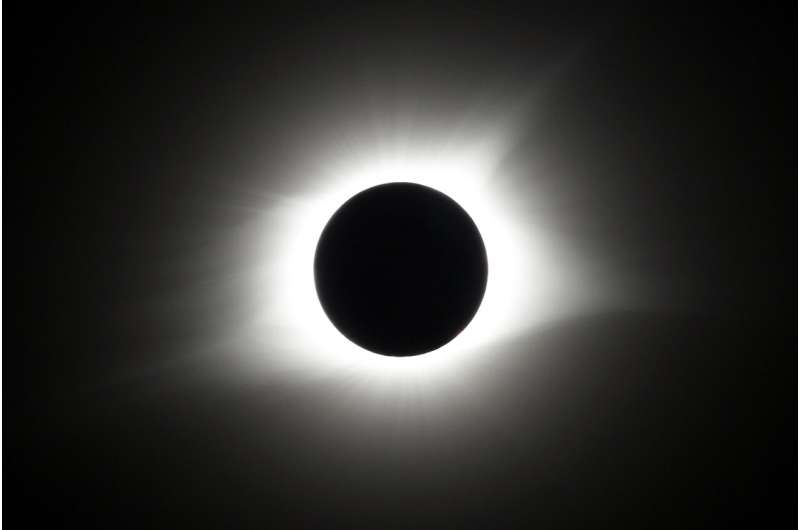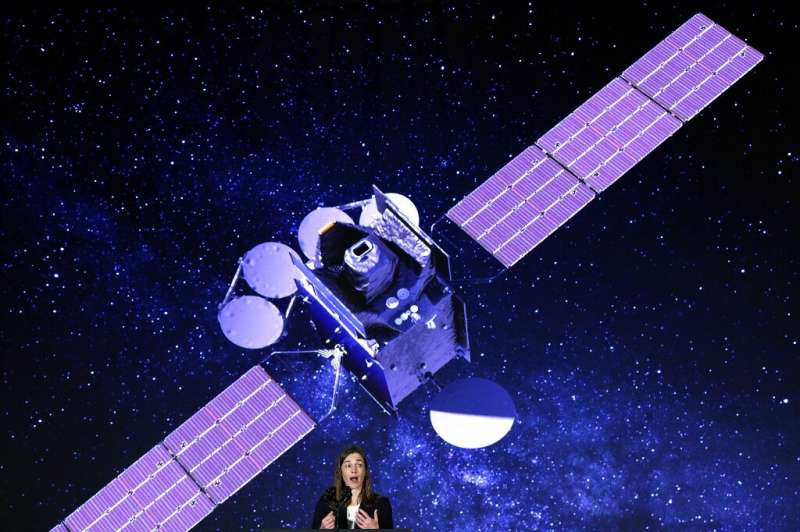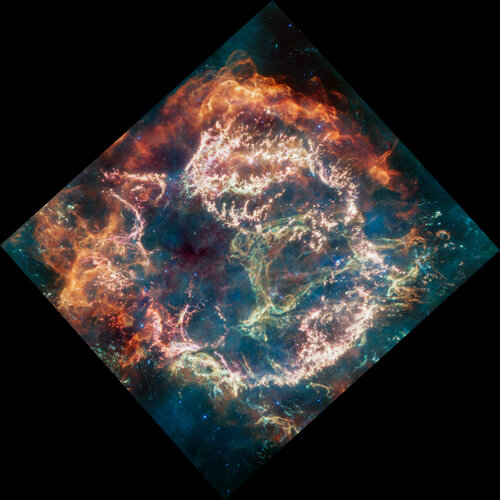
Copernical Team
Webb reveals never-before-seen details in Cassiopeia A
 The explosion of a star is a dramatic event, but the remains that the star leaves behind can be even more dramatic. A new mid-infrared image from NASA's James Webb Space Telescope provides one stunning example. It shows the supernova remnant Cassiopeia A (Cas A), created by a stellar explosion 340 years ago from Earth's perspective. The image displays vivid colors and intricate structures beggin
The explosion of a star is a dramatic event, but the remains that the star leaves behind can be even more dramatic. A new mid-infrared image from NASA's James Webb Space Telescope provides one stunning example. It shows the supernova remnant Cassiopeia A (Cas A), created by a stellar explosion 340 years ago from Earth's perspective. The image displays vivid colors and intricate structures beggin Hubble sees possible runaway black hole creating a trail of stars
 There's an invisible monster on the loose, barreling through intergalactic space so fast that if it were in our solar system, it could travel from Earth to the Moon in 14 minutes. This supermassive black hole, weighing as much as 20 million Suns, has left behind a never-before-seen 200,000-light-year-long "contrail" of newborn stars, twice the diameter of our Milky Way galaxy. It's likely the re
There's an invisible monster on the loose, barreling through intergalactic space so fast that if it were in our solar system, it could travel from Earth to the Moon in 14 minutes. This supermassive black hole, weighing as much as 20 million Suns, has left behind a never-before-seen 200,000-light-year-long "contrail" of newborn stars, twice the diameter of our Milky Way galaxy. It's likely the re An unprecedented journey to Jupiter
 Is there life beyond Earth - perhaps even in the Solar System? This fundamental question continues to motivate the scientific community worldwide. On 13 April 2023, a spacecraft will set off from Europe's spaceport in Kourou, French Guiana, on a long research journey to address this and many other questions. A journey like no other - the European Space Agency's JUpiter ICy Moons Explorer (JUICE)
Is there life beyond Earth - perhaps even in the Solar System? This fundamental question continues to motivate the scientific community worldwide. On 13 April 2023, a spacecraft will set off from Europe's spaceport in Kourou, French Guiana, on a long research journey to address this and many other questions. A journey like no other - the European Space Agency's JUpiter ICy Moons Explorer (JUICE) NASA awards innovative concept studies for science, exploration
 Technology in development today could radically change the future of air and space exploration. Nearly silent electric aircraft could ferry people and packages around cities, a sprawling radio telescope array on the far side of the Moon could reveal new secrets about the universe, and astronauts on long-duration missions could grow their own medicines to protect their health.
These concept
Technology in development today could radically change the future of air and space exploration. Nearly silent electric aircraft could ferry people and packages around cities, a sprawling radio telescope array on the far side of the Moon could reveal new secrets about the universe, and astronauts on long-duration missions could grow their own medicines to protect their health.
These concept New book explores possibilities of colonizing planets, moons and beyond
 Dan Razvan Popoviciu new book New Worlds: Colonizing Planets, Moons and Beyond (published by Bentham Science) explores the possibilities of transforming humanity into a multi-planetary species, while also sounding an alarm about our long-term future. It emphasizes the importance of efficiently using Earth's resources and expanding beyond the planet's borders.
In the book, Popoviciu discuss
Dan Razvan Popoviciu new book New Worlds: Colonizing Planets, Moons and Beyond (published by Bentham Science) explores the possibilities of transforming humanity into a multi-planetary species, while also sounding an alarm about our long-term future. It emphasizes the importance of efficiently using Earth's resources and expanding beyond the planet's borders.
In the book, Popoviciu discuss Save the date: One year until total solar eclipse sweeps US

NASA's high-resolution air quality control instrument launches

A Falcon 9 rocket successfully blasted off from Florida into space on Friday carrying a new NASA device that can track air pollution over North America down to the neighborhood level.
The launch, which took place at 12:30 am (0430 GMT), will bring into orbit the Tropospheric Emissions Monitoring of Pollution (TEMPO) instrument, which will allow scientists to monitor air pollutants and their emission sources more extensively than ever before.
The data will be used by the US Environmental Protection Agency, the National Oceanic and Atmospheric Administration and other agencies responsible for tackling atmospheric pollution.
Smelly seaweed bloom heads to Florida

A large mass of Sargassum ‘seaweed’ circling around the Gulf of Mexico may soon wash up along the US west coast near Florida – depending on the right combination of currents and wind. The bloom, which may likely be the largest ever recorded, is so large that it’s visible from space.
Week in images: 03-07 April 2023

Week in images: 03-07 April 2023
Discover our week through the lens
Webb reveals new details in Cassiopeia A

The explosion of a star is a dramatic event, but the remains that the star leaves behind can be even more dramatic. A new mid-infrared image from NASA’s James Webb Space Telescope provides one stunning example. It shows the supernova remnant Cassiopeia A (Cas A), created by a stellar explosion 340 years ago.
